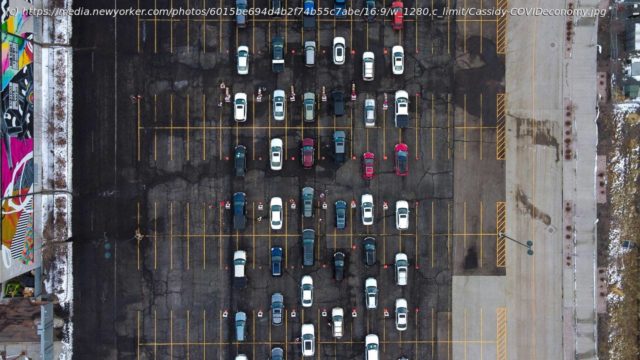Nearly a year into the pandemic, solving the economic crisis means defeating the virus.
On Thursday, the Commerce Department reported that the gross domestic product, which is the broadest measure of the economy’s output, fell by 3.5 per cent in 2020. That was the biggest decline in a single year since 1946, but it was a considerably better outcome than many economists were forecasting last spring, as many factories, stores, and other businesses were forced to close. When members of the Federal Reserve’s main policymaking committee met last June, their median prediction was that G.D.P. would fall by 6.5 per cent in 2020 as a whole, and that the unemployment rate at the end of the year would be 9.3 per cent. The actual decline in G.D.P. was barely half of what was projected, and the jobless rate also undershot the Fed’s projections: in December it stood at 6.7 per cent. A big reason for this better-than-expected performance was that policymakers—Congress and the Fed itself—provided an unprecedented amount of support for the economy when it needed it most. The $2.2 trillion CARES Act, which Congress passed on a bipartisan basis in March, “delivered the most extensive fiscal relief in U.S. history. Moreover, it was targeted primarily to vulnerable families, workers, and small businesses,” the White House Council of Economic Advisers noted in a recent report. On the monetary side, the Fed rolled out a series of emergency lending programs, cut interest rates to near-zero, and pumped trillions of dollars into the bond markets. Taken together, these programs prevented what policymakers feared most at the time: a downward spiral, in which layoffs caused by the pandemic would lead to big falls in income and spending, which, in turn, would prompt further layoffs, and so on. This feedback process is what turns recessions into depressions. By sending cash to households, jobless workers, and small businesses, and making it easier for large corporations to raise money (through the Fed programs), the federal government propped up aggregate income and spending, which otherwise would have cratered. In fact, these programs were so successful that over-all personal disposable income—the total amount of income that Americans have left to spend after paying taxes—didn’t fall at all. On Friday, the Commerce Department reported that personal disposable income rose slightly in December, to $15.5 trillion on an inflation-adjusted basis. That’s about three hundred billion dollars above the figure for last February, before the pandemic hit. This unprecedented operation to prop up household incomes helped to support spending by consumers, which accounts for about two-thirds of the gross domestic product. In April, as many people were stuck at home and many stores closed, consumer spending collapsed.






